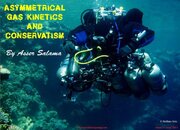I guess I'm see something in diving ID's w/o manifolds that other don't. ...
I wouldn't read too much into comments about manifolded doubles. If you go through a failure mode analysis, charting out every conceivable failure, occurring at different times of the dive and under different conditions, the
slight advantage over independent doubles starts to emerge -- especially with multiple failures. Slow undetected leaks can be the most insidious. However, the probability of most of those failures is so remote that they start to approach having the cylinder explode on your back... OK slight exaggeration but you get the idea. They get more critical as hard or soft overheads enter the equation, but the likelihood doesn't increase.
IMHO, the one big advantage of progressive equalization is the reliable hard reserve, no matter how much you get distracted by events or crisis. Your SPG or computer can be 1000 PSI off, visibility so bad you can't read it, or you lose track of time observing a Nudibranch -- you can't miss the signal it is time to equalize and a way-point has been reached. IDs or a pony provide the same primary advantage, but not the redundancy or the way-point signals.
Your failure mode analysis should include what happens if your isolation valve leaks. Unlike an old 300-500 PSI J-valve reserve, you are not likely to misjudge your air consumption by 100%. Meaning if your isolation valve is leaking you will overshoot your estimated equalization point, but probably not before you become suspicious. You could also add an SPG to the regulator on the reserve/isolated side if you are concerned or you profile is critical -- you could see if the [-]online[/-] offline cylinder pressure was dropping or not. Dropping equals a leaking isolation valve.
In the end, you have to judge for yourself what is safe enough for every dive. Let's face it, for most recreational dives a capable diver will probably never even need an octopus, let alone a backup cylinder and whole regulator.




